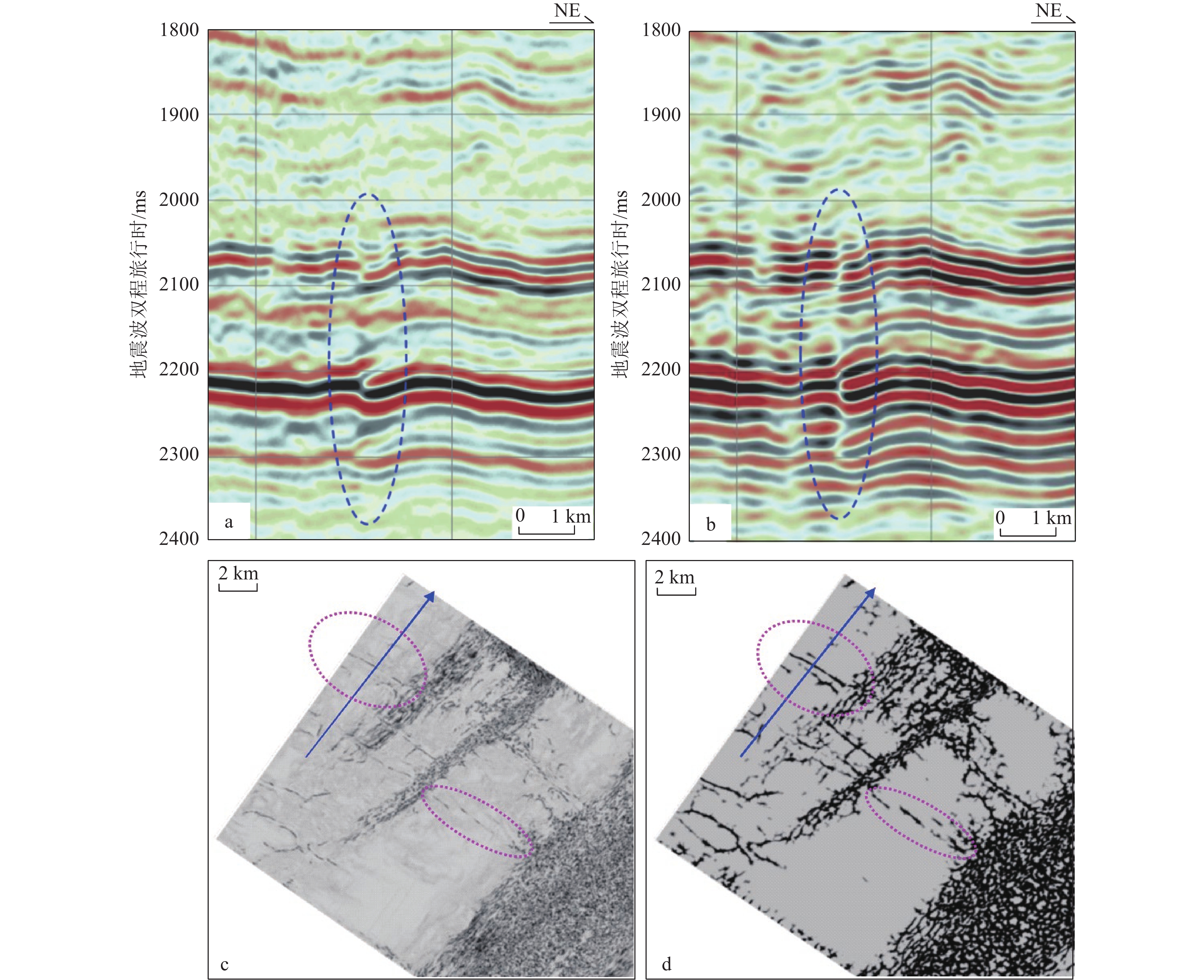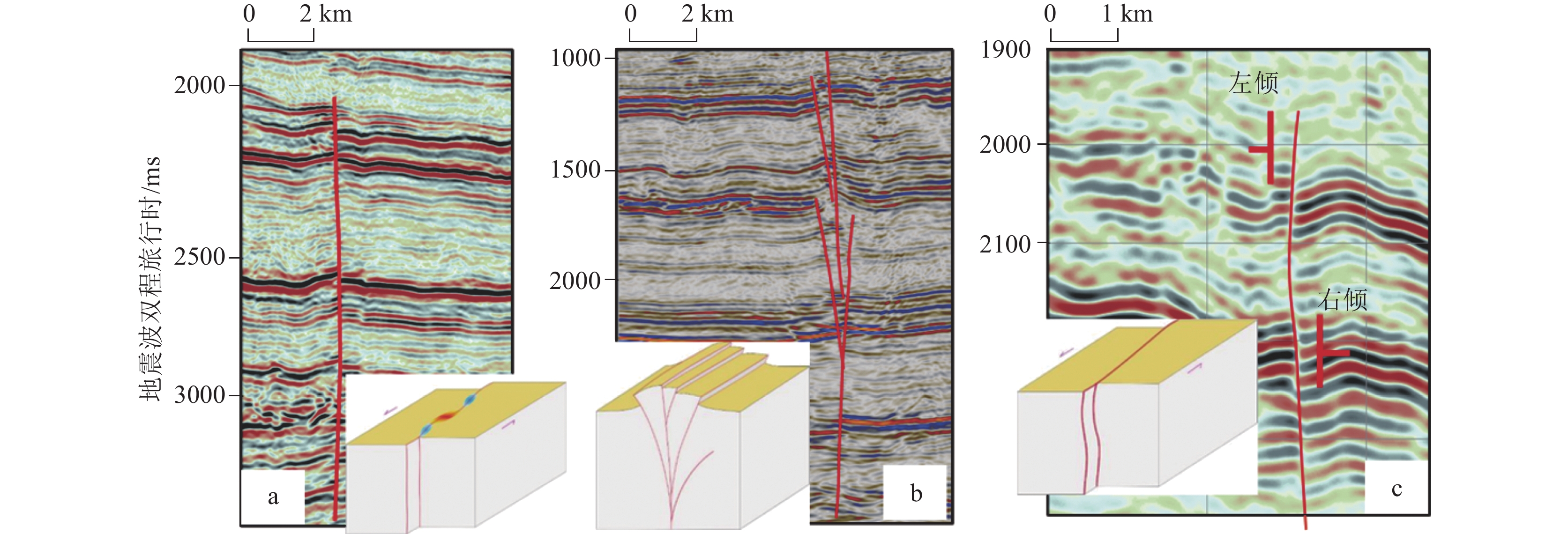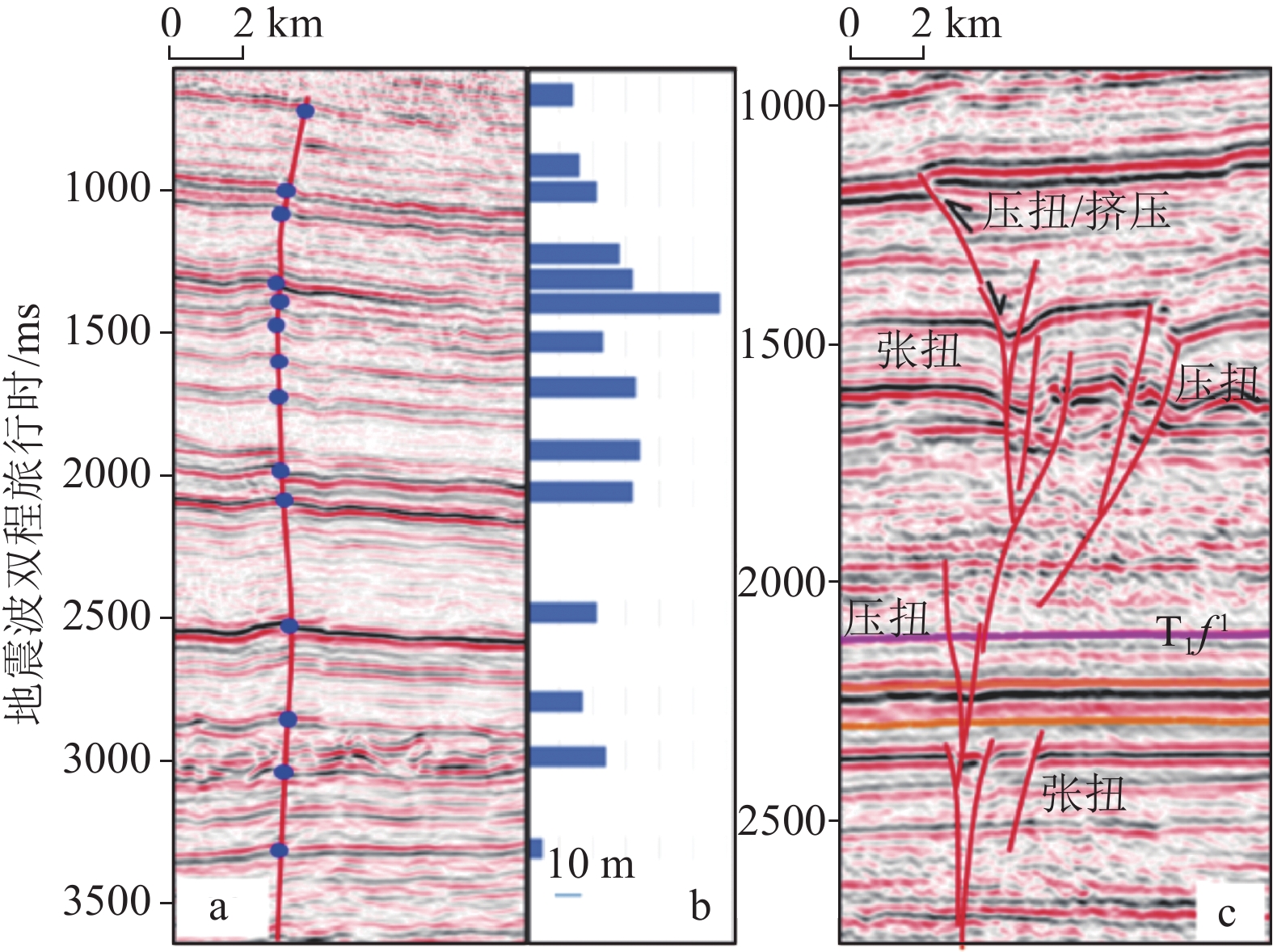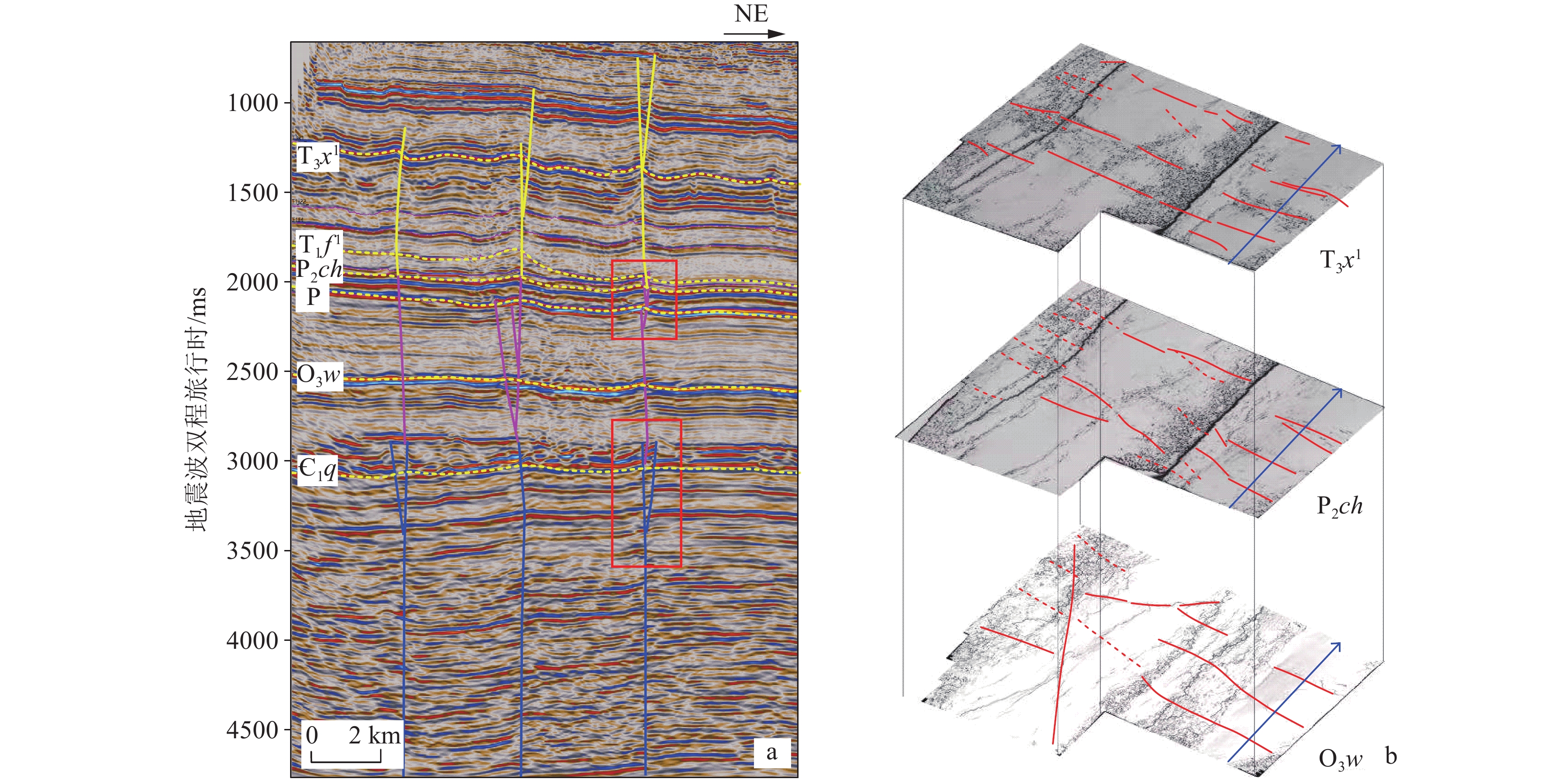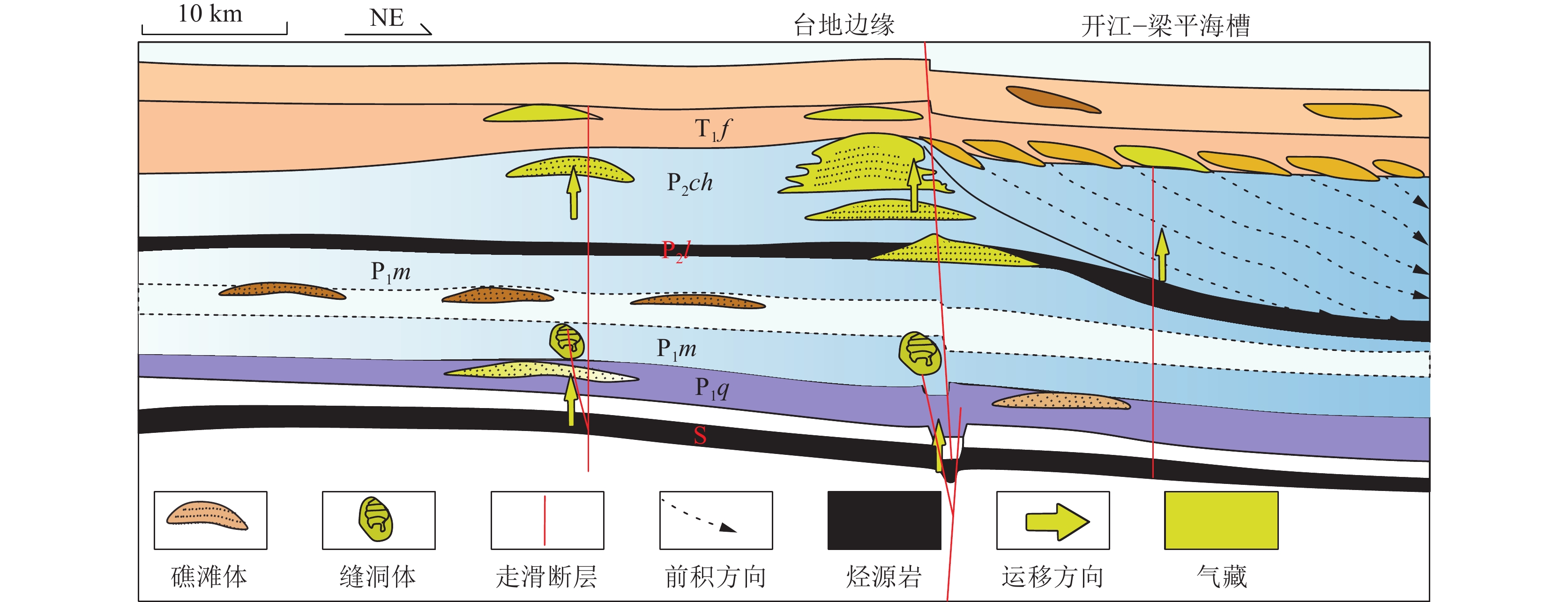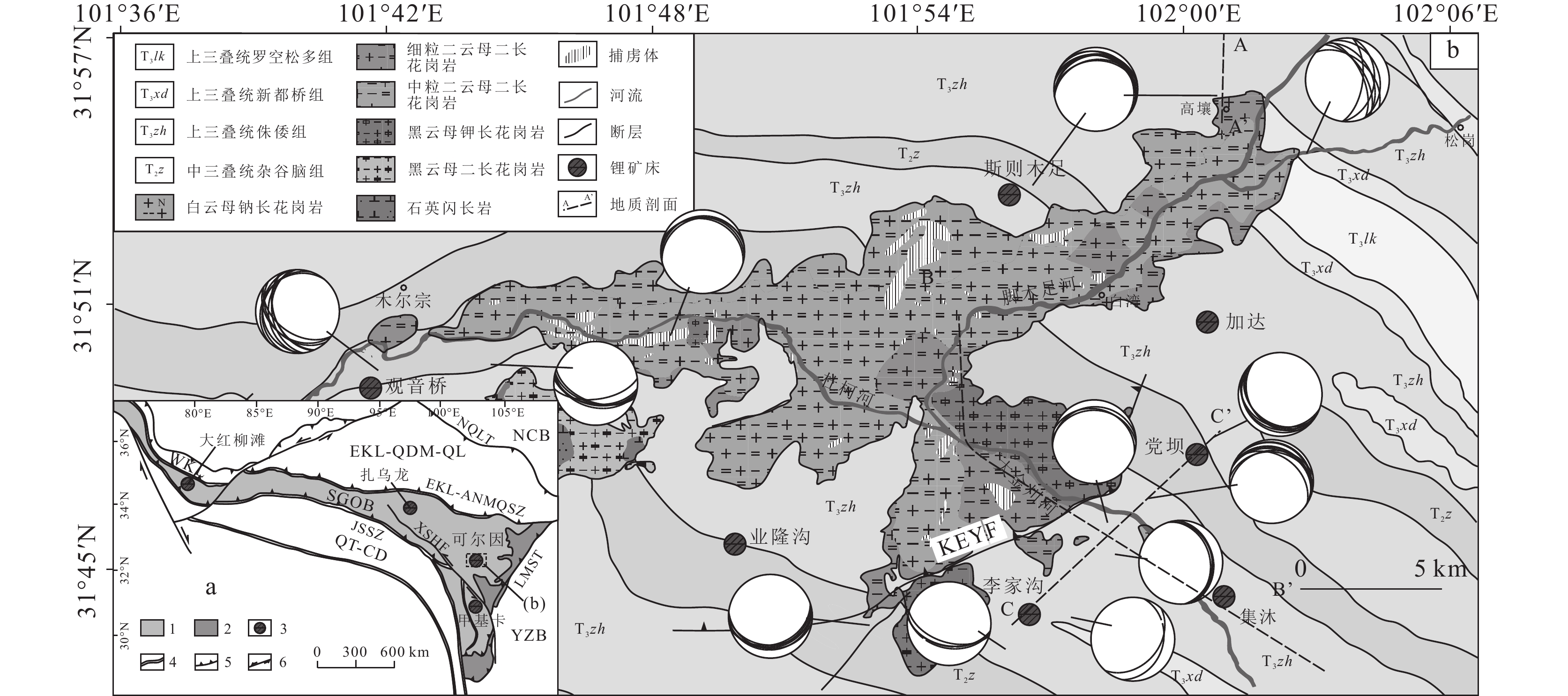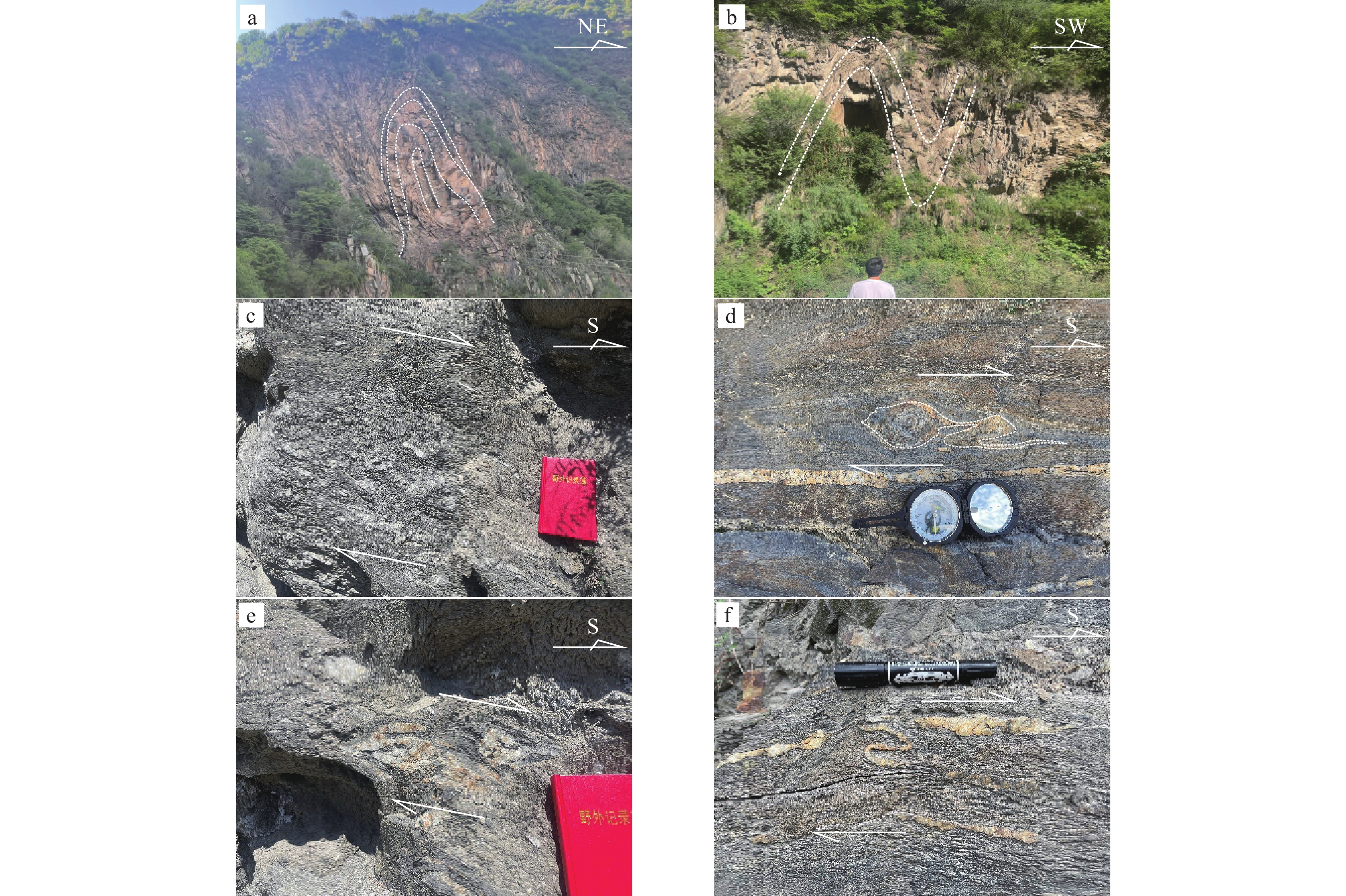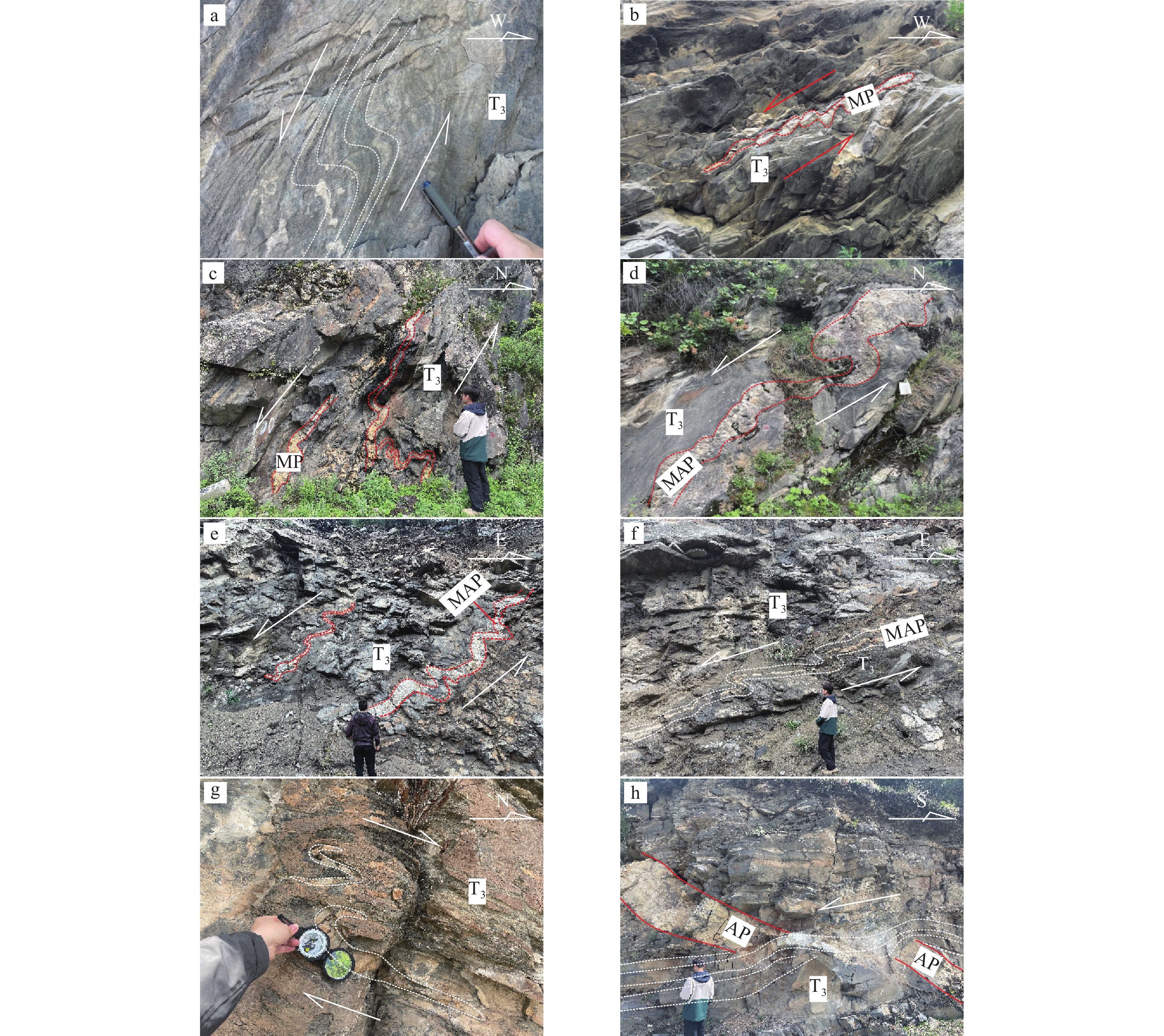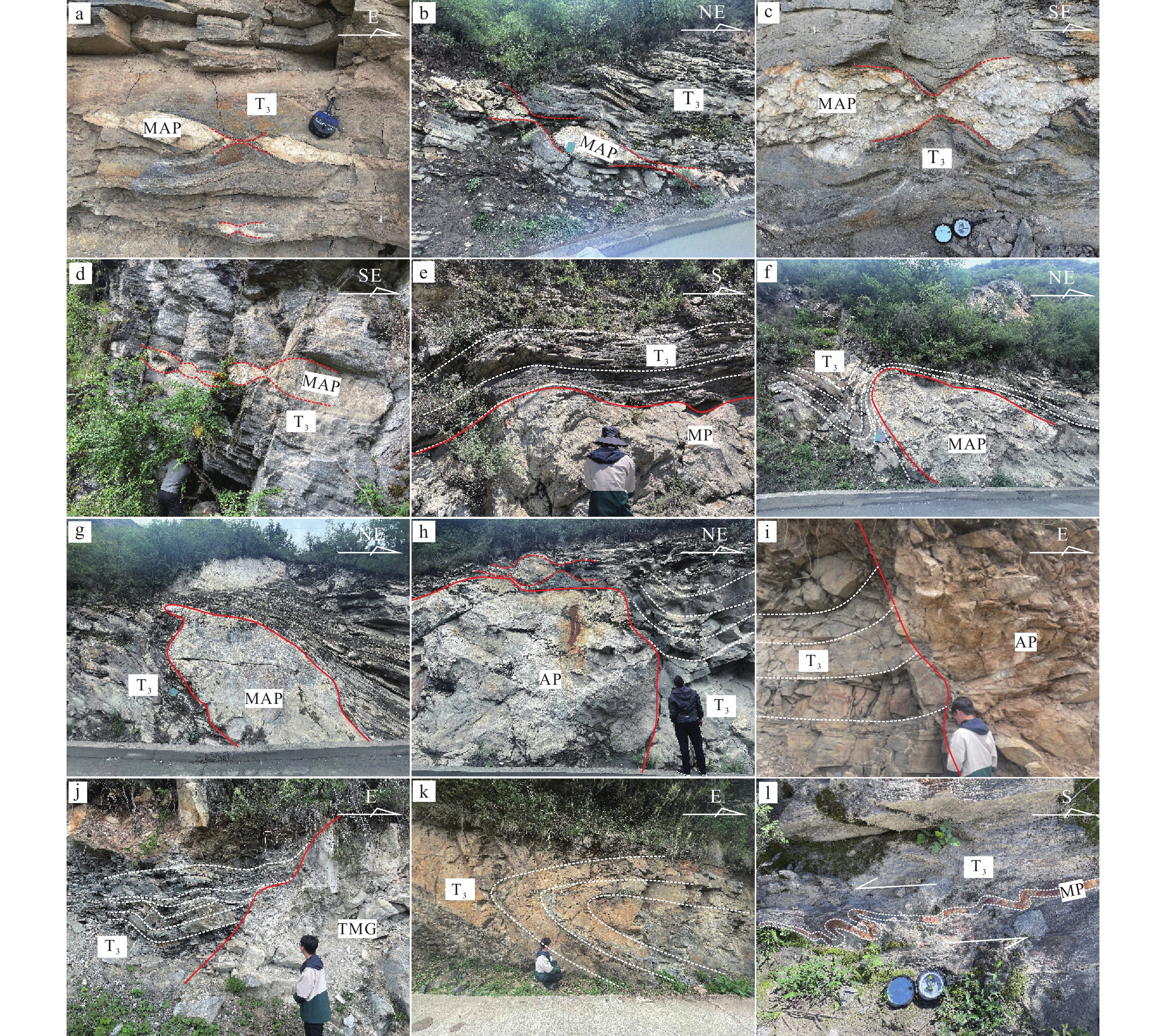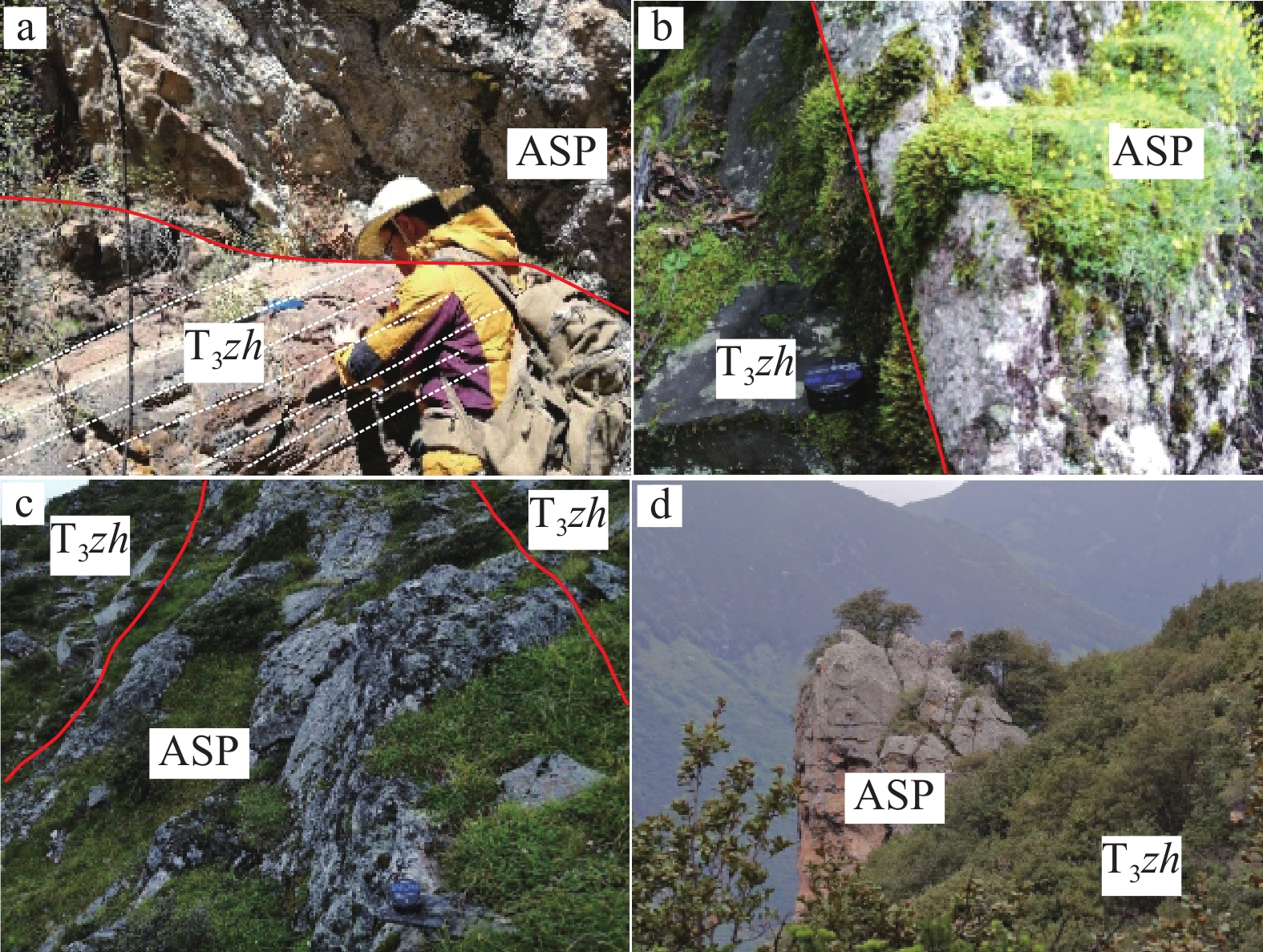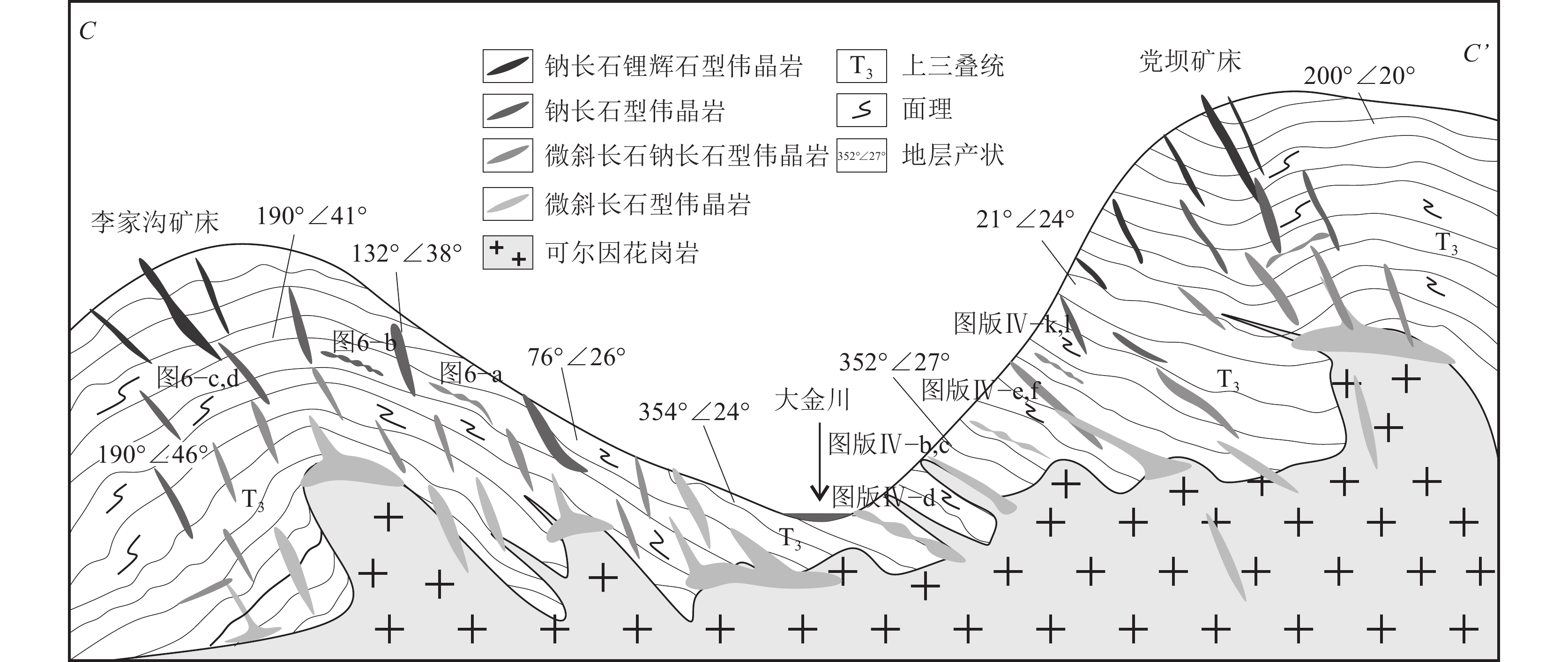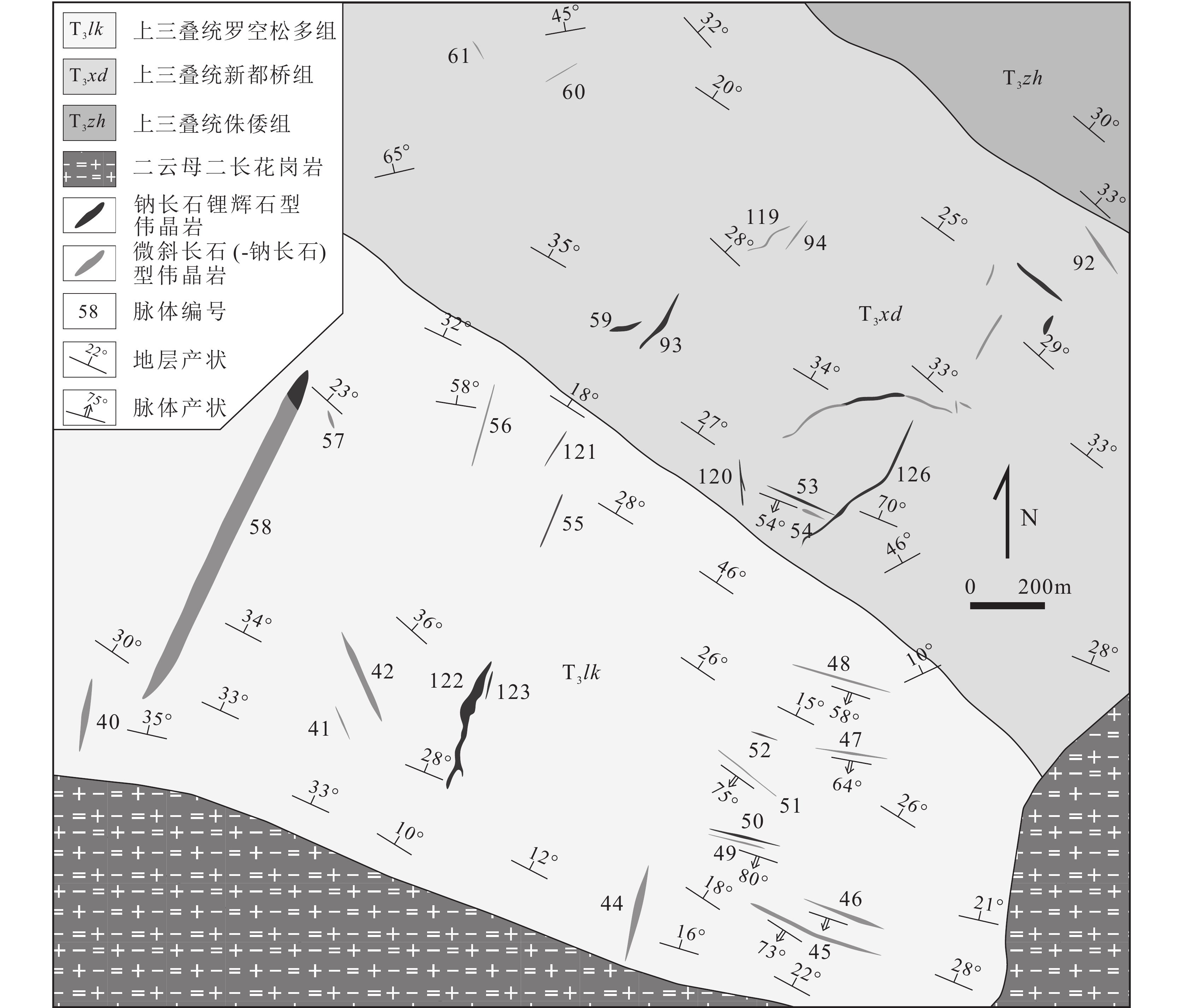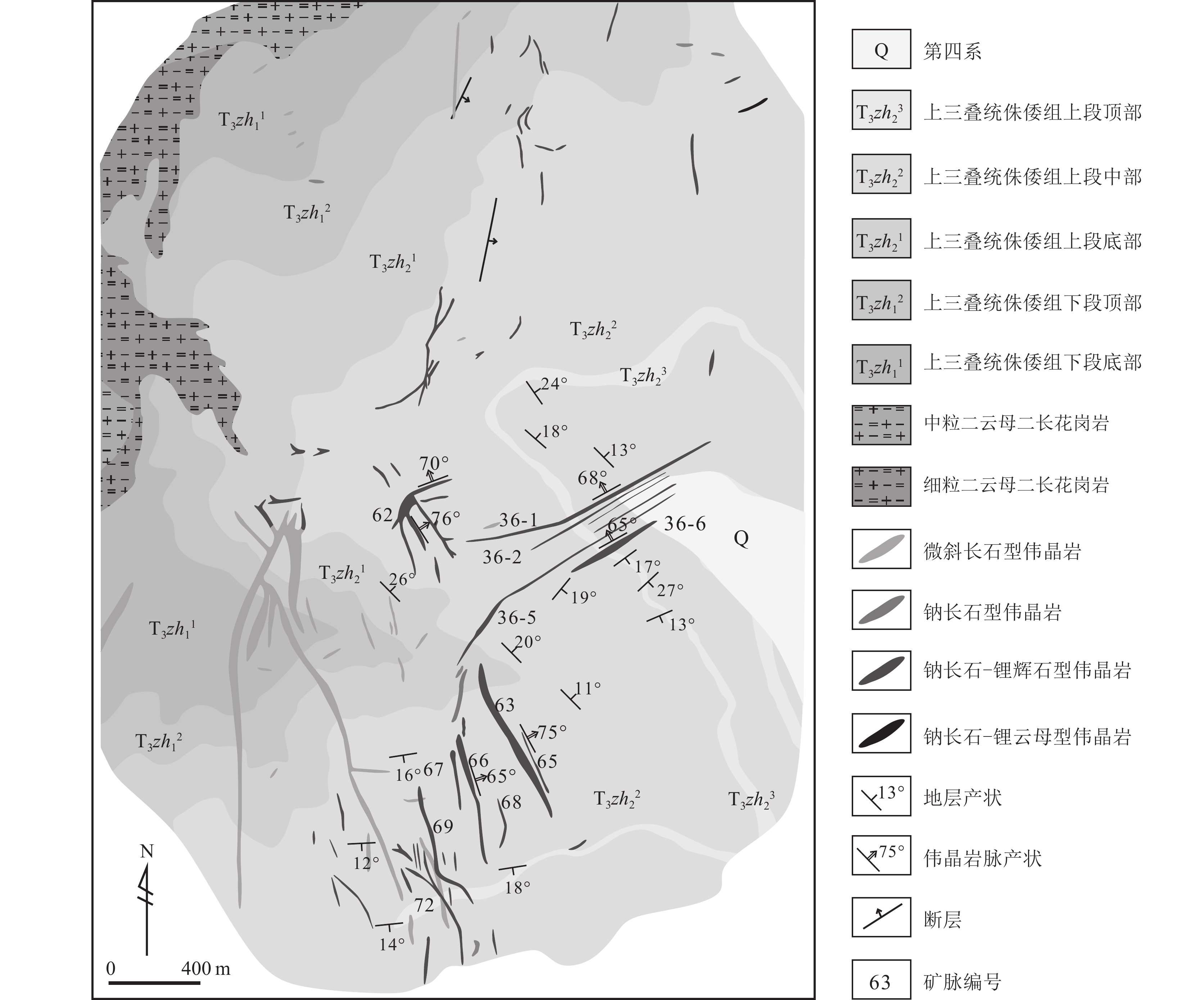Exploration of the relationship between dome structure and the formation of pegmatite lithium deposits: A case study of the Ke’eryin rare metal ore field
-
摘要:研究目的
四川可尔因稀有金属矿田是松潘-甘孜造山带内最重要的伟晶岩型锂矿密集区之一,产于马尔康穹隆中。目前对该穹隆构造如何控制伟晶岩(矿)脉产出尚不清楚,一定程度上限制了对该地区矿体赋存规律的理解。本文探讨可尔因矿田穹隆构造与伟晶岩型锂矿的形成关系,进而指导该地区伟晶岩型锂矿勘查。
研究方法对可尔因地区穹隆构造与典型矿床伟晶岩脉产出特征开展了深入的野外地质调查与构造解析。
研究结果对穹隆构造变形特征的调查结果显示,可尔因地区穹隆构造主要包含4期变形:第一期为早期区域收缩变形,第二期为可尔因韧性拆离带的发育,第三期为顶面向外滑脱+张性破裂的发育,第四期为后期叠加变形。对伟晶岩脉产出特征的分析显示,典型矿床伟晶岩脉的产出可能与下部隐伏岩体的抬升有关,而非简单受控于穹隆核部主岩体部分。
结论结合区域构造演化资料分析认为,上述穹隆变形的第一期与造山早期双向挤压碰撞有关,第二期韧性拆离带的发展是引发可尔因穹隆核部抬升的重要因素,第三期变形中张性破裂是该地区伟晶岩矿脉的主要容矿构造,第四期变形中新生代逆冲断层的发育使得矿田东南部穹隆幔部得以保存,其中的大型—超大型锂矿床受较低程度的构造剥蚀。整个可尔因矿田花岗岩和上覆三叠系可视作主穹隆系统,而局部隐伏花岗岩株和上覆地层可视作子穹隆系统,区内典型锂矿床中伟晶岩(矿)脉的产出受控于子穹隆系统。根据穹隆控矿的特征,指出核部物质来源、幔部容矿空间及伟晶岩空间分带效应是影响并控制可尔因地区穹隆成矿系统的3个重要因素,针对伟晶岩型锂矿的地质找矿尤其要注意梳理子穹隆系统的上述三要素。上述创新思路已在四川加达、高壤等矿床(区)找矿中成功应用,为在以深切割、厚覆盖为特征的高原地区进一步提升伟晶岩型锂矿找矿效率提供了参考依据。
Abstract:ObjectiveThe Ke’eryin lithium ore field in Sichuan is one of the most significant pegmatite−type lithium mineralization zones within the Songpan−Ganzi orogenic belt, situated within the Markam dome. However, the tectonic control exerted by this dome on the emplacement of pegmatite (ore) veins remains unclear, which somewhat limits understanding of the ore−hosting patterns in this region. This paper aims to explore the relationship between the dome structure in the Ke’eryin ore field and the formation of pegmatite−type lithium deposits, providing guidance for the exploration of pegmatite−type lithium resources in the region.
MethodsComprehensive field geological investigations and structural analyses were conducted to examine the dome structure and the distribution characteristics of pegmatite veins in typical deposits in the Ke'eryin area.
ResultsThe investigation into the deformation characteristics of the dome structure reveals that the dome has underwent four phases of deformation. The first phase is early regional contractional deformation. The second phase involves the development of the Ke'eryin ductile detachment zone. The third phase includes the formation of outward−slipping detachments and tensional fractures, and the fourth stage represents late superimposed deformation. Analysis of the occurrence characteristics of pegmatite veins indicates that the distribution of these veins in typical deposit is likely related to the uplift of concealed bodies rather than the outcropped portions of the dome core.
ConclusionsBased on regional tectonic evolution, it is suggested that the first stage of dome deformation is related to bi−directional compressional collision during the early orogenic stage, while the development of the detachment zone in the second stage was a key factor in uplifting the dome core. The tensional fractures formed during the third stage serve as the primary ore−hosting structures for the pegmatite veins in this region. In the fourth stage, the development of Cenozoic thrust faults preserved the mantle of the dome in the southeastern part of the ore field, protecting large to super−large lithium deposits from significant denudation. The granite and overlying Triassic strata in the Ke'eryin ore field can be regarded as the main dome system, while locally concealed granite stocks and overlying strata form sub−dome systems that controled the occurrence of pegmatite (ore) veins in typical lithium deposits. Based on the ore−controlling characteristics of domes, this paper further points out that the core material source, the ore−hosting space in the mantle, and the spatial zoning effect of pegmatites are the three key factors influencing and controlling the dome mineralization system in the Ke'eryin area. For the geological exploration of pegmatite−type lithium deposits, it is particularly important to identify and analyze these three elements within sub−dome systems. The above innovative ideas have been successfully applied and demonstrated in lithium deposits (areas) such as Jiada, and Gaorang, providing a reference for further improving the exploration efficiency of pegmatite type lithium resources in plateau areas characterized by deep cutting and thick coverage.
-
Keywords:
- dome structure /
- pegmatites /
- lithium ore /
- Ke’eryin ore field /
- Songpan-Ganzi orogenic belt
创新点穹隆核部抬升形成的张裂隙是可尔因矿田伟晶岩型锂矿床的主要赋矿空间;局部隐伏的花岗岩株和上覆地层可组成子穹隆系统,控制典型矿床中伟晶岩(矿)脉的产出。
-
走滑断层以两盘沿走向发生相对水平移动为特征,其基本特征包括平直的断线、陡立的断面及狭窄的断层带(Sylvester, 1988;杨海军等,2022)。走滑断层可能出现在不同的构造环境,存在纯剪与单剪2种机制,并出现张扭、压扭、旋扭的混合作用,具有横穿断层带的缩短、伸展或旋转作用分量(Aydin et al.,1990;Fossen,2010;邬光辉等,2016;豆方鹏等,2024),形成复杂的断裂结构。在沉积盆地中,主要通过地震方法(相干、曲率、似然性、蚂蚁体与振幅属性等)识别走滑断层(杨海军等,2022)。由于走滑断层近直立、垂向断距小、结构复杂,且地震分辨率低,造成微小走滑断层地震成像难、假象多、多解性强(夏义平等,2007;邬光辉等,2016;杨海军等,2022;陈书平等,2024;邹禺等,2024)。此外,走滑断层与油气成藏关系复杂,造成沿走滑断层复杂的油气分布与油气水产出情况(贾承造等,2021;王清华等,2021;马永生等,2022;Chen et al., 2023;邬光辉等,2023;Xiong et al.,2024),制约了走滑断层的研究与钻探部署。近年来,随着3D地震勘探技术的进展,在塔里木盆地发现了一系列走滑断层断控碳酸盐岩油气藏勘探开发的新领域。
四川盆地海相碳酸盐岩天然气资源丰富,环开江-梁平海槽两侧已发现一系列二叠系—三叠系礁滩体台缘礁滩相气田(文龙等,2012;马新华等,2019;杨雨等,2021)。前期已开展了礁滩体沉积储层研究(张建勇等,2011;冯林杰等,2021),建立了礁滩体相控气藏模式。由于深层碳酸盐岩储层趋向致密,而且气水关系复杂,礁滩气藏难以高效勘探开发,寻找优质断控气藏富集区带对碳酸盐岩天然气勘探开发具有重要作用(焦方正等,2021)。该区已开展了逆冲构造研究,但此前尚未开展走滑断层的研究。
本文在提高走滑断层分辨率地震处理的基础上,开展开江-梁平海槽东南地区走滑断层识别,明确走滑断层带分布特征,分析走滑断层的控藏作用,为走滑断层相关的天然气藏勘探提供构造模式与地质依据。
1. 地质背景
四川盆地经历了多期构造-沉积旋回,是由震旦纪—志留纪海相断陷盆地、石炭纪—中三叠世海相坳陷盆地、晚三叠世—白垩纪海陆交互相坳陷盆地、新生代前陆盆地等原型盆地组成的多旋回叠合盆地(何登发等,2011;Liu et al., 2021)。在多期构造演变过程中,在盆地周缘形成了一系列逆冲断裂构造,盆地内部呈现宽缓的隆坳构造格局,具有平面构造分区、纵向构造分层的特征(何登发等,2011;李洪奎等,2019)。四川盆地油气成藏条件优越,发育上震旦统—下寒武统、上奥陶统—下志留统、二叠系、上三叠统、下侏罗统等多套优质烃源层系,形成了震旦系、寒武系、石炭系、二叠系—三叠系碳酸盐岩常规气藏,以及志留系与寒武系页岩气、上三叠统须家河组致密气、侏罗系致密油气构成的多层系复式成藏系统(邹才能等,2014),是中国油气勘探开发的重点领域。
开江-梁平海槽位于四川盆地北部(图1),处于川中隆起向北倾伏的宽缓斜坡区,显生宙地层较齐全,其间具有多套不整合(何登发等,2011;李洪奎等,2019)。该区在震旦纪—寒武纪发育克拉通内碳酸盐岩台地,在晚加里东期(奥陶纪—志留纪)受挤压作用成为川中古隆起北斜坡的倾伏端。伴随中—晚二叠世的峨眉地裂和北部勉略洋的俯冲消减(王兴志等,2021),开江—梁平地区在中—晚二叠世处于近南北向伸展作用背景,逐步形成克拉通盆地内的浅水海槽,发育上二叠统长兴组台缘礁滩体高能相带(张建勇等,2011;杨雨等,2021)(图1)。早三叠世飞仙关组沉积早期发育向海槽前积的鲕粒滩,随后海槽遭受快速充填并逐渐演变为局限台地(张建勇等,2011;文龙等,2012;杨雨等,2021)。三叠纪晚期逐渐从海相碳酸盐岩沉积转向陆相碎屑岩沉积,经历印支期—燕山期(三叠纪末—白垩纪)的区域隆升后,在喜马拉雅期(新近纪—第四纪)形成大规模的北东向逆冲断裂带(图2)(何登发等,2011;李洪奎等,2019)。开江-梁平海槽两侧是二叠系—三叠系生物礁及鲕滩发育的有利区,已发现一系列礁滩气藏。
![]() 图 2 开江-梁平海槽东南地区典型地震剖面示逆冲构造带(剖面位置见图8)T3x1—上三叠统须家河组一段底;T1j22—下三叠统嘉陵江组二段底;T1f4—下三叠统飞仙关组四段底;T1f1—下三叠统飞仙关组一段底;P2l—上二叠统龙潭组底;P—二叠系底Figure 2. Typical seismic profile showing the thrust fault zone in the southeastern Kaijiang-Liangping Trough
图 2 开江-梁平海槽东南地区典型地震剖面示逆冲构造带(剖面位置见图8)T3x1—上三叠统须家河组一段底;T1j22—下三叠统嘉陵江组二段底;T1f4—下三叠统飞仙关组四段底;T1f1—下三叠统飞仙关组一段底;P2l—上二叠统龙潭组底;P—二叠系底Figure 2. Typical seismic profile showing the thrust fault zone in the southeastern Kaijiang-Liangping Trough2. 走滑断层的判识
由于走滑断层以水平位移为主,在沉积盆地内难以有效识别,为此提出了地表与地下走滑断层识别的一系列典型标志(Harding,1985,1990;夏义平等;2007;邬光辉等,2016)。焦方正等(2021)通过平面上的典型走滑构造、地层水平错动、构造与断距突变等特征,结合剖面上断层断至基底且上缓下陡、倾向与位移变化等特征,综合判识并明确了四川盆地安岳气田的走滑断层。对比开江-梁平海槽与安岳气田的地震资料,研究区三叠系盐膏层影响更大、地震分辨率更低,并受逆冲构造影响大(图2)。
2.1 提高走滑断层分辨率的地震资料处理
为提高深层微小走滑断层的地震分辨率,开展了地震资料的导航金字塔处理。该方法利用线性多尺度多方向的地震资料分解构技术(Tang et al., 2022;唐青松等,2024),将地震信号分解为不同尺度、不同方向的子带信息,优选对走滑断层响应较好的子带信号进行最优方向增强,突出走滑断层的地震响应,进而进行地震信号的重构处理,获得提高走滑断层分辨率的地震资料。
对比分析表明,走滑断层垂向断距小于30 m,通常呈现地层挠曲特征,缺乏断面地震响应特征(图3−a)。通过提取原始剖面的大尺度信息,去除强的大尺度背景信息,保留小尺度信息后,不仅地震分辨率得到提高,而且更容易突出走滑断层的地震响应信息(图3−b)。处理后,走滑断层的断面得到很大的增强,地层错断显著,断面较清晰,上下连续性好。同时,深部走滑断层的成像有显著的改善,其中深部地震波组增多,分辨率提高显著。此外,未处理前通过相干、曲率与振幅属性分析(图3−c),走滑断层的平面地震响应弱,难以判识走滑断层。通过导航金字塔处理后,提取的相干属性(图3−d)出现走滑断层的清晰响应。
综合分析,通过基于人工智能的金字塔导航处理,有效提高了走滑断层的识别精度,为走滑断层的识别与解释提供了资料基础。
2.2 剖面标志
结合研究区的地质背景,通过典型走滑断层的地震-地质响应特征分析,提出了判识走滑断层的剖面标志。
(1)高陡直立:地震剖面上,走滑断层高陡直立,向下断至基底(图4-a;邬光辉等,2016)。研究区走滑断层通常呈直立线性断面,不同于正断层与逆断层上陡下缓的断面特征。剖面上断层产状一般高陡直立,近于垂直的断面可以作为走滑断层判识的典型标志。由于走滑断层两盘垂向位移小,地层无明显的同相轴错断特征,因此可以通过近于直立的狭窄褶皱变形带判别走滑断层带(焦方正等,2021)。由于这类褶皱带也可能是底辟构造或断层滑脱构造,可以通过分析短轴-穹窿褶皱、高陡构造变形带是否影响至基底等特征进行判识。如果在基底断面变缓,并出现滑脱与拆离的迹象,很可能不是走滑断层带,而是高陡的次级正/逆断层。
![]() 图 4 地震剖面与走滑断层的典型标志(剖面位置见图8)a—高陡直立;b—花状构造;c—倾向反转Figure 4. Seismic profile and typical marks of strike-slip faults
图 4 地震剖面与走滑断层的典型标志(剖面位置见图8)a—高陡直立;b—花状构造;c—倾向反转Figure 4. Seismic profile and typical marks of strike-slip faults(2)花状构造:该构造是走滑断层中主干断层和分支断层在剖面上的特殊组合形态,是走滑断层的重要鉴别标志(Harding,1985;夏义平等,2007;邬光辉等,2016)。通过走滑断层的地震响应分析,研究区发育典型的花状构造特征,在二叠系以下以正花状构造为主,二叠系—三叠系发育负花状构造,形成“花上花”的叠加构造(图4−b)。走滑断层垂向断距较小,没有明显的断面,通常呈现背形特征。剖面上断层自基底向上发散,形成上凸的断垒,具有明显的挤压、逆断、背形构造特征(邬光辉等,2016)。研究区走滑构造活动较弱,次级断层较少,多呈简单的低幅度背形。有些次级断层在主干断层一侧发育,形成半花状构造,在二叠系—三叠系分布较多。
(3)倾向反转:地震剖面上,走滑断层通常呈直立状断入基底,但也可能出现不平直的断面,形成上下层位中断面倾向的反转(图4-c、5−a)。受上下地层岩石物性或先存薄弱面的影响,高陡直立的走滑断面容易发生倾向的改变,导致上下地层中走滑断层倾向反转与断面形态变化。随着这种构造特征进一步发展,可能形成丝带效应(邬光辉等,2016),这是一种典型的走滑断层识别标志。
(4)断距突变:正断层或逆断层同盘地层均沿同一倾向滑动,断距不变或有规律地渐变。而走滑断层不同层段垂向位移可能不一致,并出现无规律的突变(图5−a,b)。同时,沿走滑断层带同一层位的垂向断距也会出现复杂变化,不同于正/逆断层垂向断距从中部向两端减少。此外,沿走滑断层走向的水平位移也可能出现突变。分析表明,走滑断层以水平运动为主,同时也有斜向的垂向运动,上下岩层的相对位移出现空间的扭动,在某一部位可能出现较大差异。同时,岩层的能干性差异,以及岩层中的塑性变形与构造挠曲差异,导致某一地层垂向断距的突变。当然,走滑断层的多期活动,以及同沉积断层的生长,也可能导致断层断距的突变,需要具体分析。
![]() 图 5 地震剖面(a)及其垂向断距图(b)和上下断层性质与位置变化(c)(图b为图a中对应各点的构造高差;剖面位置见图8)T1f1—下三叠统飞仙关组一段底Figure 5. Seismic section (a) and its vertical displacement (b), and changes in the nature and location of the upper and lower faults (c) illustrating strike-slip faults
图 5 地震剖面(a)及其垂向断距图(b)和上下断层性质与位置变化(c)(图b为图a中对应各点的构造高差;剖面位置见图8)T1f1—下三叠统飞仙关组一段底Figure 5. Seismic section (a) and its vertical displacement (b), and changes in the nature and location of the upper and lower faults (c) illustrating strike-slip faults(5)断层性质突变:地震剖面上,二叠系之下通常呈现压扭断层特征(图4−a),二叠系—下三叠统多发育张扭断层,而三叠系上部又出现压扭断层(图5−c)。地震剖面上既有下凹的地堑,又有上凸的断垒构造特征。这可能受控于转换挤压与转换拉张的区域构造应力场的变化,形成多期不同性质的走滑断层叠加,从而形成张扭与压扭断层的继承性发育,组成“花上花”的复杂结构。这种多层花状构造均向下收敛,下部出现更陡直的断层带,不同于反转断层的组合特征。
总之,研究区同一剖面上可能同时出现走滑断层的多种剖面标志,有助于判识走滑断层。而单一的剖面标志往往具有多解性,需要结合邻近剖面上的其他标志综合判识。
2.3 平面标志
由于很多走滑断层在地震剖面上响应弱、断面不清,而且剖面标志往往具有多解性,采用对走滑断层敏感的增强相干、曲率、导航能量属性(马德波等,2018;Tang et al., 2022)等地震平面属性有助于判识走滑断层。
(1)雁列/斜列断层:该类断层是水平剪切作用的产物,也是走滑断层的典型标志(Fossen,2010;邬光辉等,2016)。通过提高分辨率处理,在研究区地震属性平面图上可能出现雁列走滑断层的行迹(图6−a)。由于走滑断层演化程度低,通常没有形成贯穿的走滑断层带,而是呈一系列雁列或斜列断层组合,形成狭长的线性走滑断层带,属于成熟度较低的断层带。这些断层延伸较短、规模较小,以斜列或雁列形式组成走滑断层带。此外,也有一些与主干走滑断层斜交的次级断层,它们与主干断层的排列方式可能符合经典的里德尔剪切断层(Fossen,2010),也是走滑断层相关的典型构造类型。
![]() 图 6 三叠系增强相干平面属性示雁列断层(a)、长兴组台缘礁滩沿走滑断层发生变化(b)及最大正向曲率示斜列断层组合形成左行左阶步的拉分微地堑(c)(图中立体图示所在构造模式;红色虚线示走滑断层;红色圆圈示微地堑位置;位置见图8)Figure 6. Triassic planar enhanced coherence attributes showing en échelon faults (a),platform-marginal reef-shoals of the Changxing Formation changing along strike-slip faults (b), and maximum forward curvature showing oblique faults with a sinistral left-stepping to form a pull-apart micrograben (c)
图 6 三叠系增强相干平面属性示雁列断层(a)、长兴组台缘礁滩沿走滑断层发生变化(b)及最大正向曲率示斜列断层组合形成左行左阶步的拉分微地堑(c)(图中立体图示所在构造模式;红色虚线示走滑断层;红色圆圈示微地堑位置;位置见图8)Figure 6. Triassic planar enhanced coherence attributes showing en échelon faults (a),platform-marginal reef-shoals of the Changxing Formation changing along strike-slip faults (b), and maximum forward curvature showing oblique faults with a sinistral left-stepping to form a pull-apart micrograben (c)(2)岩相水平错动:走滑断层错断早期的地质体,是识别走滑断层的重要标志之一,常用于判定走滑断层的位移量和运动方式(邬光辉等,2016)。由于研究区走滑断层活动弱、水平位移小,难以识别,因此利用沉积相带的错动、转向与扭动判识走滑断层。受走滑断层的影响,研究区东部二叠系长兴组礁滩体沿走滑断层带出现明显的分区(图6−b)。结合地震剖面的走滑断层响应特征分析,长兴组沉积前在相带分区部位已有北西走向的走滑断层发育。尽管水平位移小,但通过走滑断层两盘地形的差异,可能影响沉积相带的横向变化,从而指示走滑断层。而且后期走滑断层再活动错断了早期的台缘带(图7−d),揭示存在走滑断层。
![]() 图 7 曲率平面图示马尾构造(a)、增强相干属性平面图示斜列断层(b)及沿走向的构造高差示水平方向断层性质与位移突变(c)、导航振幅属性平面图示走滑断层造成的线性突变带(d)(位置见图8)Figure 7. The planar curvature map showing the horsetail structure (a), planar enhanced coherence attribute showing oblique faults (b) and vertical throw along fault strike showing the abrupt change of the fault nature and displacement (c), and the planar amplitude attribute by Steerable Pyramid reprocessing showing linear abruptness zone along strike-slip fault (d)
图 7 曲率平面图示马尾构造(a)、增强相干属性平面图示斜列断层(b)及沿走向的构造高差示水平方向断层性质与位移突变(c)、导航振幅属性平面图示走滑断层造成的线性突变带(d)(位置见图8)Figure 7. The planar curvature map showing the horsetail structure (a), planar enhanced coherence attribute showing oblique faults (b) and vertical throw along fault strike showing the abrupt change of the fault nature and displacement (c), and the planar amplitude attribute by Steerable Pyramid reprocessing showing linear abruptness zone along strike-slip fault (d)(3)拉分微地堑:在大型张扭走滑断层系统中,可能发育大型的拉分地堑(Fossen,2010),是走滑断层的重要指示标志。研究区由于缺少大规模的走滑运动,雁列/斜列断层组合多,缺少大型的拉分地堑。但局部形成左行左阶步或右行右阶步的断层组合时,受局部张扭应力作用,可能形成微地堑(图6−c)。拉分地堑通常位于2个走滑断层叠覆部位的拉张区,其拉伸轴基本平行于主断层,多呈菱形微断陷。由于走滑断层断面陡直,断裂活动集中在断层附近很窄的范围内,产生窄而深的地堑、半地堑。断陷边界可能发育次级张性及张剪性断层,形成雁列断层/褶皱,有助于走滑断层的判识。
(4)马尾构造与短轴背斜:走滑断裂带的尾段容易形成马尾状构造,通常由一系列向外撒开的次级断层组合而成(Fossen,2010),是走滑断裂带的典型构造之一。通过地震属性分析,研究区大型走滑断层带的尾部多发育马尾构造(图7−a)。这些断层向外撒开的角度较大,多呈不对称发育。有些次级断层并未与主干断层相连,可能代表相对较弱的走滑作用。通过构造解释与成图,结合相干等地震属性图分析,研究区存在与北西走向高陡断层带共生的小型短轴背斜、穹窿背斜,这些条带状展布的短轴/穹窿背斜构造揭示深部有走滑断层带。此外,向外撒开的条带状展布的褶皱带通常具有斜向的压扭或张扭作用,也可能指示走滑断层的存在。
(5)类型与断距横向突变:沿伸展与挤压断层带走向上的位移和变形通常呈有规律的渐变(邬光辉等,2016),但沿走滑断层走向方向的构造类型与位移可能表现出突变(图7−b,c)。由于断层倾向可能发生摆动,走向可能突然转弯,局部断层性质相应地发生转变,出现张扭下掉-压扭上凸及其垂向位移负值-正值的突变。通过沿走滑断层带的垂向高差统计分析,断层高差横向变化大,不同于正/逆断层中间大、两端小的高差分布特征,揭示了走滑断层垂向位移与变形的横向差异性,表明沿走滑断层带构造高低起伏变化大。同时,伴生褶皱、次级断层等构造特征沿走滑断层带走向上变化大,局部可能出现构造突变及海豚效应,指示了走滑断层的存在。
(6)地震属性线性突变:由于研究区走滑断层地震响应弱,在地震剖面与常规相干属性上通常缺乏显著的走滑断层行迹。但通过地震平面属性分析,走滑断层两侧的地震属性可能出现突变与水平错动特征(图7−d)。对于北东向的逆冲构造带,在地震剖面上难以识别走滑断层,但有的地震平面属性图显示北西走向的走滑断层错断北东走向的逆冲构造带,并形成局部北西走向的变形带。逆冲构造带或倾斜岩层受走滑断层错动后,可能造成构造或岩层的地震属性沿走滑断层发生突变或牵引现象(图7−d)。这与长兴组礁滩体被错动的特征相似(图6−b),但这种后期走滑断层的错动呈现出的断层效应更显著。因此,在逆冲构造带,利用增强相干、曲率等地震平面属性,借助逆冲断层、构造等值线与岩相的线性突变判识走滑断层。
综上所述,在提高走滑断层地震分辨率的基础上,通过上述5个剖面标志、6个平面标志结合应用,可能判识弱地震响应的走滑断层。
3. 走滑断层的分布
在开江-梁平海槽东南地区走滑断层识别的基础上,借助地震相干、曲率、导航能量属性(马德波等,2018;Tang et al., 2022)等开展了走滑断层的地震解释与成图。结果发现,研究区发育北西走向的走滑断层(图8),其中西部三维区解释出6条北西走向的走滑断层带,东部三维区识别出3条北西走向的走滑断层带,可能一直延伸至北西方向的海槽内部,总长度达300 km。
平面上,这些走滑断层带近于平行展布(图8)。研究区雁列、斜列断层组合发育,呈现断续线性分布,如F1~F6断层。该类构造在地震剖面上主要表现为高陡直立的断层(图4−a),断面陡直,但垂向与水平断距通常较小,一般是断层活动较弱的区段,平面上呈线性展布。局部分段可出现断面倾向改变或断面弯曲的特征(图4−c),在空间上表现为丝带效应。走滑断层带贯穿程度低,分段性强。在主干断层带也出现较多的R剪切断层,形成向外撒开的次级断层,在地震剖面上表现为花状构造,由底部高陡直立断层向上发散。在F7、F8和F9断层一些分段部位出现马尾构造,形成较宽的变形带,但断层间的相互作用较弱,局部变形弱,剖面上分支断层断距较小、向下收敛于主干断层。局部分段间出现软连接-硬连接叠覆区,有的叠覆部位可能出现微断垒与地堑,表明断层间发生相互作用,形成较强的变形带,在剖面上表现为正花状构造或负花状构造,变形作用强烈。
走滑断层纵向上分层特征显著(图9),在基底—下寒武统、中寒武统—石炭系、二叠系—三叠系三大构造层差异分布,具有不同的构造样式。在深层基底—下寒武统构造层以张扭走滑断层为主,断层通常具有高陡直立的断面,向上发散形成下掉的负花状构造,有一系列走滑断层向上终止在下寒武统下部。走滑断层向上发育至二叠系底部,并呈压扭特征,不同于下部的张扭断层,这与区域挤压作用有关。同时,走滑断层向上撒开形成更宽阔的花状构造,向下收敛并入深部主干断层,具有高陡直立的断面。有少量断层向上延伸至三叠系,以线性雁列断层为主,并发育正花状构造,与断层组合有关。但三叠纪断层总体活动性较弱,表现为继承性发育的特征。总之,三大构造层经历了多期张扭-压扭的作用,纵向上形成多个正花状与负花状叠加发育的构造样式。
![]() 图 9 开江-梁平海槽走滑断层解释地震剖面(a,位置见图8)与分层相干属性解释走滑断层平面分布图(b)T3x1—上三叠统须家河组一段底;T1f1—下三叠统飞仙关组一段底;P2ch—上二叠统长兴组底;P—二叠系底;O3w—上奥陶统底;Є1q—下寒武统筇竹寺组底Figure 9. Interpreted seismic profile of strike-slip faults in the southeastern Kaijiang-Liangping Trough (a) and the layered distribution of strike-slip faults interpreted by the coherence attributes (b)
图 9 开江-梁平海槽走滑断层解释地震剖面(a,位置见图8)与分层相干属性解释走滑断层平面分布图(b)T3x1—上三叠统须家河组一段底;T1f1—下三叠统飞仙关组一段底;P2ch—上二叠统长兴组底;P—二叠系底;O3w—上奥陶统底;Є1q—下寒武统筇竹寺组底Figure 9. Interpreted seismic profile of strike-slip faults in the southeastern Kaijiang-Liangping Trough (a) and the layered distribution of strike-slip faults interpreted by the coherence attributes (b)4. 走滑断层的勘探启示
开江-梁平海槽两侧发育二叠系—三叠系礁滩体储层(张建勇等,2011;冯林杰等,2021;杨雨等,2021)。但礁滩体基质储层具有低孔(<6%)、低渗(<2 mD)特征,天然气产量低。同时,该区气藏水体活跃,礁滩型圈闭天然气充注程度差异大。
开江-梁平海槽内上二叠统龙潭组页岩烃源岩发育(梁东星等,2015),与台缘带形成侧向运聚成藏(图10)。此外,通过走滑断层沟通深部寒武系与志留系烃源岩,可能形成垂向运聚成藏模式,构成多层段复式成藏系统(图10)。因此,走滑断层不仅可以连通深部烃源岩与二叠系台缘礁滩体圈闭,同时也能沟通二叠系台内礁滩体、海槽内的三叠系鲕滩体圈闭,以及深层断层带缝洞体圈闭,形成多层段、多区域发育的走滑断控气藏。由此可见,除二叠系长兴组台缘礁滩体主要目的层外,海槽内走滑断层发育部位的三叠滩体、二叠系长兴组台内滩及其之下的下二叠统—奥陶系碳酸盐岩缝洞体圈闭也是进一步勘探的有利方向。
对比分析表明,研究区走滑断层带的展布方向(图8)与开江-梁平海槽的走向一致(文龙等,2012;杨雨等,2021),表明二者具有密切关系。结合区域地质资料分析,二叠纪受南北向拉张作用的影响(王兴志等,2021),长兴组台地边缘与海槽沿走滑断裂带发育,揭示走滑断层对沉积相带的展布具有控制作用。长兴组沉积前,沿走滑断层带形成的局部地貌高,有利于礁滩体高能相带的发育,控制了台缘礁滩体储层的分布。另外,走滑断层可能错断或分隔生物礁(图6−b),造成礁滩体分布与展布的差异性。同时,测井储层解释分析表明,走滑断层带碳酸盐岩储层渗透率增长显著,裂缝发育高值井段比礁滩体基质渗透率可能增加1个数量级。而且走滑断层带溶蚀孔洞发育,有利于准同生期大气淡水岩溶与埋藏期的热液溶蚀,断裂相关缝洞储层段的孔隙度比礁滩体基质孔隙度增加1倍以上。走滑断层带裂缝-孔洞型、缝洞型储层发育,是优质“甜点”储层发育的有利部位。如TD110井位于走滑断层与长兴组台缘礁滩体叠合部位,岩心和成像测井显示裂缝和溶蚀孔洞发育,其渗透率(>2mD)、孔隙度(平均5.34%)及测试产量(日产天然气50.99×104m3)高,而走滑断层不发育的LG82、LG84井礁滩体未获得工业气流,表明走滑断层具有增储与富集高产的作用。因此,沿走滑断层破碎带布井可能实现该区深层碳酸盐岩气藏的高效开发。
5. 结 论
(1)本文提出了高陡直立、花状构造、倾向反转、断距突变与断层性质突变5个走滑断层剖面识别标志,以及雁列/斜列断层、地质体水平错动、拉分微地堑、马尾构造与短轴背斜、断层类型与高差横向变化、地震属性线性突变6个走滑断层平面识别标志,形成了适合研究区平面、剖面相结合的深层弱走滑断层的地震判识方法。
(2)发现了与北西走向台缘带近平行的走滑断层带,剖面上在震旦系—下寒武统、中寒武统—石炭系、二叠系—三叠系3大构造层叠置分布,发育线性构造、花状构造;平面上线性断续延伸,以雁列/斜列构造发育为特征。
(3)走滑断层不仅可以沟通深部多套烃源岩,形成断控垂向运聚、多套层段含气的复式断控成藏系统,而且具有增储与高产的作用,走滑断控气藏是深层碳酸盐岩勘探开发的有利新领域。
致谢:感谢蜀南气矿许希辉、西南石油大学马兵山、唐书航等专家对地震-地质解释的技术支持,感谢审稿专家对本文提出的宝贵意见。
-
图 1 松潘-甘孜造山带构造格架(a,据Roger et al., 2004; Xu et al., 2020修改)与可尔因锂矿田地质简图(b, 据Dai et al., 2021修改;矿田东部南部逆冲断层KEYT与韧性拆离带KDZ据Zheng et al., 2020)
1—三叠系西康群复理石沉积岩;2—扬子西缘新元古代−古生代地层;3—伟晶岩型锂矿田;4—缝合带;5—逆冲断层;6—走滑断层;SGOB—松潘甘孜造山带;NCB—华北克拉通;EKL-QDM-QL—东昆仑-柴达木-祁连地块;QT-CD—羌塘-昌都地块;WKL—西昆仑地块;YZB—扬子板块;EKL-ANMQS—东昆仑-阿尼玛卿缝合带;NQLT—北祁连断裂;LMST—龙门山断裂;JSSZ—金沙江缝合带;XSHF—鲜水河断裂;KEYT—可尔因逆冲断层;极射赤平投影内容为层理产状
Figure 1. Sketch map of regional tectonics (a) and simplified geological map of the Ke’eryin ore field (b)
图 5 李家沟矿床地质简图(据邓运等,2018)
Q—第四系;T3zh5—上三叠统侏倭组第五段;T3zh4—上三叠统侏倭组第四段;T3zh3—上三叠统侏倭组第三段;T3zh2—上三叠统侏倭组第二段;T3zh1—上三叠统侏倭组第一段
Figure 5. Schematic geological map of the Lijiagou deposit
图 7 可尔因矿田东部穹隆构造与伟晶岩型锂矿床形成关系示意图(剖面图)(剖面位置见图1;该剖面地形参考实际地形,比例不代表实际比例)
Figure 7. Schematic diagram illustrating the relationship between dome structures and the formation of pegmatite type lithium deposits in the eastern part of the Ke’eryin ore field
图 8 高壤地区地质简图(据中国地质科学院矿产资源研究所,2022)
Figure 8. Schematic geological map of the Gaorang area
图 9 加达矿床地质简图(据Li et al., 2024a)
Figure 9. Schematic geological map of the Jiada deposit
-
Bureau of Geology and Mineral Resources of Sichuan Province. 1991. Regional geology of Sichuan Province[M]. Beijing: Geological Publishing House: 1−732 (in Chinese).
Dai H Z, Wang D H, Liu S B, et al. 2021. Newly discovered euxenite and Polycrase in the Jiada pegmatite−type lithium deposit, Ke’eryin lithium ore field, and its geological significance[J]. Acta Geologica Sinica (English Edition), 95(5): 1782−1783. doi: 10.1111/1755-6724.14756
de Sigoyer J, Vanderhaeghe O, Duchêne S, et al. 2014. Generation and emplacement of Triassic granitoids within the Songpan Ganze accretionary−orogenic wedge in a context of slab retreat accommodated by tear faulting, Eastern Tibetan plateau, China[J]. Journal of Asian Earth Sciences, 88: 192−216. doi: 10.1016/j.jseaes.2014.01.010
Deng Y, Fei G C, Li J, et al. 2018. Study of C−HO isotopes and geochronology of the Lijiagou pegmatite spodumene deposit in Sichuan Province[J]. Mineralogy and Petrology, 38(3): 40−47 (in Chinese with English abstract).
Deschamps F, Duchêne S, de Sigoyer J, et al. 2017. Coeval mantle−derived and crust − derived magmas forming two neighbouring plutons in the Songpan Garze accretionary orogenic wedge (SW China)[J]. Journal of Petrology, 58: 2221−2256. doi: 10.1093/petrology/egy007
Dong Y P, Santosh M. 2016. Tectonic architecture and multiple orogeny of the Qinling Orogenic Belt, Central China[J]. Gondwana Research, 29: 1−40. doi: 10.1016/j.gr.2015.06.009
Fei G C, Li T R, Menuge J F, et al. 2023. Petrogenesis of aplites in the Ke'eryin rare metal orefield in the Songpan−Garze Fold Belt, Eastern Tibet: Evidence from mineralogy, geochemistry, geochronology and Hf−Nd isotopes[J]. Lithos, 438/439: 107017.
Geochemical Exploration Team of Sichuan Bureau of Geology and Mineral Resources. 2022. Lithium exploration and resource reserve verification report of Dangba mining area, Markam City, Sichuan Province[R]. 1−165 (in Chinese).
Gu C H. 2014. Metallogenic regularity of spodumene deposits in the closely spaced pegmatite area in the southeastern Ke’eryin pegmatite field, Sichuan province[J]. Contributions to Geology and Mineral Resources Research, 29(1): 59−65 (in Chinese with English abstract).
Guo X, Gao R, Randy Keller G, et al. 2013. Imaging the crustal structure beneath the eastern Tibetan Plateau and implications for the uplift of the Longmen Shan range[J]. Earth and Planetary Science Letters, 379: 72−80. doi: 10.1016/j.jpgl.2013.08.005
Harrowfield M J, Wilson J L. 2005. Indosinian deformation of the Songpan Garze Fold Belt, northeast Tibetan Plateau[J]. Journal of Structural Geology, 27: 101−117. doi: 10.1016/j.jsg.2004.06.010
Institute of Mineral Resources (IMR), Chinese Academy of Geological Sciences (CAGS). 2022. Report on the results of the second−level project of comprehensive investigation and evaluation of large lithium−beryllium polymetallic resource base in Songpan−Ganzi lithium metallogenic belt[R]. 1−337 (in Chinese).
Li J K, Li P, Yan Q G, et al. 2023. Geology and mineralization of the Songpan−Ganze−West Kunlun pegmatite−type rare−metal metallogenic belt in China: An overview and synthesis[J]. Science China Earth Sciences, 66(8): 1702−1724 (in Chinese with English abstract). doi: 10.1007/s11430-022-1084-x
Li J K. 2006. Mineralizing mechanism and continental geodynamics of typical pegmatite deposits in western Sichuan, China[D]. Doctoral Dissertation of China University of Geosciences (Beijing): 1−226 (in Chinese with English abstract).
Li J K, Wang D H, Fu X F. 2006. 40Ar/39Ar ages of the Keeryin pegmatite type rare metal deposit, WesternSichuan, and its tectonic significances[J]. Acta Geologica Sinica, 80(6): 843−848 (in Chinese with English abstract).
Li S, Miller C F, Wang T, et al. 2021. Role of sediment in generating contemporaneous, diverse “type” granitoid magmas[J]. Geology, 50: 427−431.
Li X, Dai H Z, Huang F, et al. 2024a. Genesis of the Jiada pegmatite lithium deposit in the Ke'eryin ore field, Western Sichuan, China: Evidence from whole−rock trace element and Li isotope[J]. Ore Geology Reviews, 170: 106106. doi: 10.1016/j.oregeorev.2024.106106
Li X, Dai H Z, Liu S B, et al. 2024b. Genesis of the Ke’eryin two−mica monzogranite in the Ke’eryin pegmatite−type lithium ore field, Songpan−Garze Orogenic Belt: Evidence from lithium isotopes[J]. Minerals, 14: 687.
Li X, Dai H Z, Wang D H, et al. 2024c. Metallogenic regularity and exploration of the Ke’eryin lithium ore field in Aba, Sichuan[J]. Acta Petrologica Sinica, 40(9): 2819−2840 (in Chinese with English abstract).
Li X, Dai H Z, Wang D H, Liu S B, et al. 2022. Geochronological and geochemical constraints on magmatic evolution and mineralization of the northeast Ke’eryin pluton and the newly discovered Jiada pegmatite−type lithium deposit, Western China[J]. Ore Geology Reviews, 150: 105164. doi: 10.1016/j.oregeorev.2022.105164
Lowenstern J B. 1995. Intrusive degassing at the magma/wall rock interface[C]//Brown M, Picolli P M. The Origin of Granites and Related Rocks. Third Hutton Symposium: Abstracts, USGS Circular 1129: 92.
Ma S C, Wang D H, Liu S B, et al. 2020. The application of comprehensive prospecting methods on the hardrock type lithium deposit--A case study of the Jiada lithium mine in the Maerkang rare metals orefield[J]. Acta Geologica Sinica, 94(8): 2341-2353 (in Chinese with English abstract).
Mattauer M, Malavielle J, Calassou S. 1992. La chane triasique de Songpan−Ganze (oust Sichun at east Tibet): une chane de plissment−decollement sur margepassive[J]. ComptesRendus de I’ Acad. Sci. Paris 314 (6): 619−626.
Mulja T, Williams−Jones A E. 2018. The physical and chemical evolution of fluids in rare−element granitic pegmatites associated with the Lacorne pluton, Quebec, Canada[J]. Chemical Geology, 493: 281−297. doi: 10.1016/j.chemgeo.2018.06.004
Nabelek P I, Whittington A G, Sirbescu M L C. 2010. The role of H2O in rapid emplacement and crystallization of granitic pegmatites: Resolving the paradox of large crystals in highly undercooled melts[J]. Contributions to Mineralogy and Petrology, 160: 313−325. doi: 10.1007/s00410-009-0479-1
Roger F, Jolivet M, Malavieille J. 2010. The tectonic evolution of the Songpan−Garze (North Tibet) and adjacent areas from Proterozoic to Present: A synthesis[J]. Journal of Asian Earth Sciences, 39: 254−269. doi: 10.1016/j.jseaes.2010.03.008
Roger F, Malavieille J, Leloup P H, et al. 2004. Timing of granite emplacement and cooling in the Songpan−Garze Fold Belt (eastern Tibetan Plateau) with tectonic implications[J]. Journal of Asian Earth Sciences, 22: 465−481. doi: 10.1016/S1367-9120(03)00089-0
Roger F. 1994. Datations et tracage des granitoides associes a la chainede Songpan − Garze ( Ouest Sichuan , Chine) par les methodes U/Pb, Rb/Sr et Sm/Nd[J]. These de doctorat, Montpellier II: 1−239.
Sengor A M C. 1985. Tectonic subdivisions and evolution of Asia[J]. Bull. Tech. Univ. Istanbul, 46: 355−435.
Shi Z L, Zhang H F, Cai H M. 2009. Petrogenesis of strongly peraluminous granites in Markan area, Songpan Fold Belt and its tectonic implication[J]. Earth Science, 34(4): 569−584 (in Chinese with English abstract).
Sichuan Provincial Bureau of Geology and Mineral Resources. 1991. Regional geology of Sichuan Province[M]. Beijing: Geological Publishing House: 1−732 (in Chinese).
Geological team 404 of Sichuan provincial geological Bureau. 1965. Preliminary survey report on the Kerin granite megalite field in Sichuan Province[R]. National Geological Data Center, DOI:10.35080/n01.c.36860 (in Chinese).
Sirbescu M L C, Schmidt C, Veksler I V, et al. 2017. Experimental crystallization of undercooled felsic liquids: generation of pegmatitic texture[J]. Journal of Petrology, 58: 539−568. doi: 10.1093/petrology/egx027
Wang D H, Dai H Z, Liu S B, et al. 2022. New progress and trend in ten aspects of lithium exploration practice and theoretical research in China in the past decade[J]. Journal of Geomechanics, 28(5): 743−764 (in Chinese with English abstract).
Wang D H, Dai H Z, Yu Y, et al. 2021. Theory, method and practice of survey and evaluation of large−scale lithium resource base: A case study of the Jiajika super−large lithium mine in western Sichuan[M]. Beijing: Science Press: 1−458 (in Chinese).
Wang D H, Liu S B, Yu Y, et al. 2019. Exploration progress and development suggestion for the large−scale mining base of strategic critical mineral resources in western Sichuan[J]. Acta Geologica Sinica, 93(6): 1444−1453 (in Chinese with English abstract).
Wang D H, Dai H Z, Sun Y, et al. 2023. Theory and practice of deep exploration of lithium energy metal minerals[M]. Beijing: Geological Publishing House (in Chinese).
Wang D H, Zou T R, Xue Z G, et al. 2004. Advance in the study of using pegmatite deposits as the tracer of orogenic process[J]. Advances in Earth Science, 19(4): 614−620 (in Chinese with English abstract).
Wang Z P, Liu S B, Ma S C, et al. 2018. Metallogenic regularity, deep and periphery prospecting of Dangba superlarge spodumene deposit in Aba, Sichuan Province[J]. Earth Science, 43(6): 2029−2041 (in Chinese with English abstract).
Weislogel A L, Graham S A, Chang E Z, et al. 2010. Detrital zircon provenance from three turbidite depocenters of the Middle−Upper Triassic Songpan−Ganzi complex, central China: Record of collisional tectonics, erosional exhumation, and sediment production[J]. Geological Society of America Bulletin, 122(11/12): 2041−2062. doi: 10.1130/B26606.1
Xiao L, Zhang H F, Clemens J D, et al. 2007. Late Triassic granitoids of the eastern margin of the Tibetan Plateau: Geochronology, petrogenesis and implications for tectonic evolution[J]. Lithos, 96(3/4): 436−452. doi: 10.1016/j.lithos.2006.11.011
Xu Z Q, Fu X F, Ma X X, et al. 2016. The gneiss domes in Tibetan Plateau and their potential for prospecting[J]. Acta Geologica Sinica, 90(11): 2971−2981 (in Chinese with English abstract).
Xu Z Q, Fu X F, Wang R C, et al. 2020. Generation of lithiumbearing pegmatite deposits within the Songpan−Ganze orogenic belt, East Tibet[J]. Lithos, 354−355: 105281. doi: 10.1016/j.lithos.2019.105281
Xu Z Q, Fu X F, Zhao Z B, et al. 2019. Discussion on relationships of gneiss dome and metallogenic regularity of pegmatite type lithium deposits[J]. Earth Science, 44(5): 1452−1463 (in Chinese with English abstract).
Xu Z Q, Hou L W, Wang Z X, et al. 1992. Orogenic process of the Songpan−Ganzi orogenic belt, China[M]. Beijing: Geological Publishing House: 1−202 (in Chinese).
Xu Z Q, Wang R C, Zhao Z B, et al. 2018. On the structural backgrounds of the large−scale "Hard−rock type" lithium ore belts in China[J]. Acta Geologica Sinica, 92(6): 1091−1106 (in Chinese with English abstract).
Yang Y Q, Liu S B, Wang D H, et al. 2023. Discussion on the difference of metallogenic characteristics and genesis of the Jiajika and Keeryin rare metals ore fields in Western Sichuan[J]. Acta Geoscientica Sinica, 44(3): 419−433 (in Chinese with English abstract).
Yin A, Harrison T M. 2000. Geologic evolution of the Himalayane Tibetan orogen[J]. Annual Review of Earth and Planetary Sciences, 28: 211−280. doi: 10.1146/annurev.earth.28.1.211
Yuan C, Zhou M F, Min S, et al. 2010. Triassic granitoids in the eastern Songpan Ganzi Fold Belt, SW China: Magmatic response to geodynamics of the deep lithosphere[J]. Earth and Planetary Science Letters, 290(3/4): 481−492.
Zhang H F, Parrish R, Zhang L, et al. 2007. A−type granite and adakitic magmatism association in Songpan−Garze fold belt, eastern Tibetan Plateau: Implication for lithospheric delamination[J]. Lithos, 97: 323−335. doi: 10.1016/j.lithos.2007.01.002
Zhang H F, Zhang L, Harris N, et al. 2006. U−Pb zircon ages, geochemical and isotopic compositions of granitoids in songpan−garze fold belt, eastern Tibetan plateau: constraints on petrogenesis and tectonic evolution of the basement[J]. Contributions to Mineralogy and Petrology, 152: 75−88. doi: 10.1007/s00410-006-0095-2
Zhao Z B, Du J X, Liang F H, et al. 2019. Structure and metamorphism of Markam gneiss dome from the eastern Tibetan plateau and its implications for crustal thickening, metamorphism, and exhumation[J]. Geochemistry, Geophysics, Geosystems, 20: 24−45.
Zheng Y L, Xu Z Q, Gao W Q, et al. 2020. Tectonic genesis of the Markam gneiss dome and pegmatitic lithium deposits in western Sichuan Province[J]. Acta Geologica Sinica, 95(10): 3069−3084 (in Chinese with English abstract).
Zheng Y L, Xu Z Q, Li G W, et al. 2020. Genesis of the Markam gneiss dome within the Songpan−Garze orogenic belt, eastern Tibetan Plateau[J]. Lithos, 362/363: 105475. doi: 10.1016/j.lithos.2020.105475
Zhu H P, Fei G C, Tan H, et al. 2023. Geological characteristics and metallogenic age of pegmatites in the central zone of the Dangba pegmatite−type rare−metal deposit in the Ke’eryin orefield, Sichuan province[J]. Bulletin of Mineralogy, Petrology and Geochemistry, 42(2): 350−359 (in Chinese with English abstract).
邓运, 费光春, 李剑, 等. 2018. 四川李家沟伟晶岩型锂辉石矿床碳氢氧同位素及成矿时代研究[J]. 矿物岩石, 38(3): 40−47. 古城会. 2014. 四川省可尔因伟晶岩田东南密集区锂辉石矿床成矿规律[J]. 地质找矿论丛, 29(1): 59−65. 李建康, 李鹏, 严清高, 等. 2023. 松潘-甘孜-西昆仑花岗伟晶岩型稀有金属成矿带成矿规律[J]. 中国科学: 地球科学, 53(8): 1718−1740. 李建康. 2006. 川西典型伟晶岩型矿床的形成机理及其大陆动力学背景[D]. 中国地质大学(北京)博士学位论文: 1−226. 李建康, 王登红, 付小方. 2006. 川西可尔因伟晶岩型稀有金属矿床的40Ar/39Ar年代及其构造意义[J]. 地质学报, 80(6): 843−848. 李鑫, 代鸿章, 王登红, 等. 2024. 四川阿坝可尔因锂矿田成矿规律与成矿预测[J]. 岩石学报, 40(9): 2819−2840. 马圣钞, 王登红, 刘善宝, 等. 2020. 综合勘查方法在硬岩型锂矿找矿中的应用——以马尔康稀有金属矿田加达锂矿为例[J]. 地质学报, 94(8): 2341−2353. 时章亮, 张宏飞, 蔡宏明. 2009. 松潘造山带马尔康强过铝质花岗岩的成因及其构造意义[J]. 地球科学, 34(4): 569−584. 四川省地质矿产局. 1991. 四川省区域地质志[M]. 北京: 地质出版社: 1−732. 四川省地质局四〇四地质队. 1965. 四川省可尔因花岗伟晶岩田初步普查报告[R]. 全国地质资料馆, DOI: 10.35080/n01.c.36860. 四川省地质矿产勘查开发局化探队. 2022. 四川省马尔康市党坝矿区锂矿勘探及资源储量核实报告[R]. 1−165. 王登红, 代鸿章, 刘善宝, 等. 2022. 中国锂矿十年来勘查实践和理论研究的十个方面新进展新趋势[J]. 地质力学学报, 28(5): 743−764. 王登红, 代鸿章, 于扬, 等. 2021. 大型锂资源基地调查评价的理论方法与实践以川西甲基卡超大型锂矿为例[M]. 北京: 科学出版社: 1−458. 王登红, 刘善宝, 于扬, 等. 2019. 川西大型战略性新兴产业矿产基地勘查进展及其开发利用研究[J]. 地质学报, 93(6): 1444−1453. 王登红, 代鸿章, 孙艳, 等. 2023. 锂能源金属矿产深部探测理论与实践[M]. 北京: 地质出版社. 王登红, 邹天人, 徐志刚, 等. 2004. 伟晶岩矿床示踪造山过程的研究进展[J]. 地球科学进展, 19(4): 614−620. 王子平, 刘善宝, 马圣钞, 等. 2018. 四川阿坝州党坝超大型锂辉石矿床成矿规律及深部和外围找矿方向[J]. 地球科学, 43(6): 2029−2041. 许志琴, 付小方, 马绪宣, 等. 2016. 青藏高原片麻岩穹窿与找矿前景[J]. 地质学报, 90(11): 2971−2981. 许志琴, 付小方, 赵中宝, 等. 2019. 片麻岩穹窿与伟晶岩型锂矿的成矿规律探讨[J]. 地球科学, 44(5): 1452−1463. 许志琴, 侯立玮, 王宗秀, 等. 1992. 中国松潘-甘孜造山带的造山过程[M]. 北京: 地质出版社: 1−190. 许志琴, 王汝成, 赵中宝, 等. 2018. 试论中国大陆“硬岩型”大型锂矿带的构造背景[J]. 地质学报, 92(6): 1091−1106. 杨岳清, 刘善宝, 王登红, 等. 2023. 川西甲基卡和可尔因矿田稀有金属成矿特征差异性及成因探讨[J]. 地球学报, 44(3): 419−433. 郑艺龙, 许志琴, 高文琦, 等. 2020. 川西马尔康片麻岩穹隆与伟晶岩型锂矿的构造成因[J]. 地质学报, 95(10): 3069−3084. 中国地质科学院矿产资源研究所. 2022. 松潘-甘孜成锂带锂铍多金属大型资源基地综合调查评价二级项目成果报告[R]. 朱汇派, 费光春, 谭华, 等. 2023. 四川可尔因矿田党坝伟晶岩型稀有金属矿床中带伟晶岩地质特征及成矿时代[J]. 矿物岩石地球化学通报, 42(2): 350−359.




 下载:
下载:

